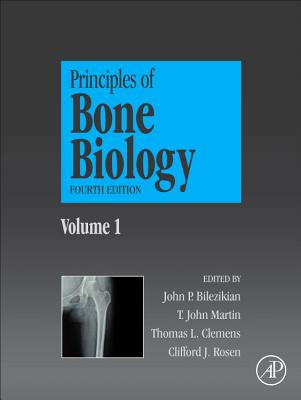Bone Health: A Reflection of the Social Mosaic
暫譯: 骨骼健康:社會馬賽克的反思
Miszkiewicz, Justyna J., Brennan-Olsen, Sharon L., Riancho, Jose A.
- 出版商: Springer
- 出版日期: 2019-07-11
- 售價: $4,100
- 貴賓價: 9.5 折 $3,895
- 語言: 英文
- 頁數: 176
- 裝訂: Hardcover - also called cloth, retail trade, or trade
- ISBN: 9811372551
- ISBN-13: 9789811372551
海外代購書籍(需單獨結帳)
相關主題
商品描述
This multidisciplinary book addresses three lines of evidence (medieval, contemporary, and epigenetic) regarding the effect of human socio-economic status on bone health. It provides an overview of the extent to which human social background affects adult bone quality and quantity, and makes recommendations for future skeletal biology research into lifestyle-related musculoskeletal disorders.
The book is divided into three major parts, the first of which discusses bone and dental health in medieval human skeletal remains from distinct socio-economic status groups. In turn, Part 2 reviews bone health in contemporary human populations with a range of social backgrounds; in addition, a conceptual model proposing a social gradient of osteoporosis and fracture risk related to biological mechanisms and cumulative stressors throughout the human lifecycle is presented. Lastly, Part 3 highlights the role of epigenetics in socially patterned risk factors for skeletal disorders, and discusses how epigenetic mechanisms transduce the psychosocial environment and increase the risk of developing conditions such as osteoporosis.
Overall, the book highlights the importance of considering the social-biological nexus in future skeletal biology research and future treatment of bone disease. Increased awareness of this nexus can potentially improve individual and population-level bone health interventions, reducing the social inequities observed in fracture risk.
Given its scope, the book offers a valuable resource for researchers, academics, and students in the fields of medicine, epidemiology, the health sciences, biological anthropology, human anatomy and adaptation, developmental studies of human societies, human biology, and any field concerning musculoskeletal disorders and health. It will also benefit clinical practitioners evaluating osteoporosis, osteopenia, fracture risk, bone quality and quantity.
商品描述(中文翻譯)
這本跨學科的書籍探討了三條證據(中世紀、當代和表觀遺傳學)關於人類社會經濟地位對骨骼健康的影響。它提供了人類社會背景在多大程度上影響成人骨質和骨量的概述,並對未來與生活方式相關的肌肉骨骼疾病的骨骼生物學研究提出建議。
本書分為三個主要部分,第一部分討論了來自不同社會經濟地位群體的中世紀人類骨骼遺骸中的骨骼和牙齒健康。第二部分回顧了當代人類群體中具有不同社會背景的骨骼健康;此外,還提出了一個概念模型,該模型提出了與生物機制和整個人類生命週期中的累積壓力源相關的骨質疏鬆症和骨折風險的社會梯度。最後,第三部分強調了表觀遺傳學在社會模式化的骨骼疾病風險因素中的作用,並討論了表觀遺傳機制如何轉化心理社會環境並增加發展如骨質疏鬆症等疾病的風險。
總體而言,本書強調了在未來的骨骼生物學研究和骨病治療中考慮社會-生物聯繫的重要性。對這一聯繫的認識提高,可能改善個體和群體層面的骨骼健康干預,減少骨折風險中觀察到的社會不平等。
考慮到其範疇,本書為醫學、流行病學、健康科學、生物人類學、人類解剖學與適應、發展人類社會研究、人類生物學以及任何與肌肉骨骼疾病和健康相關的領域的研究人員、學者和學生提供了寶貴的資源。它也將使評估骨質疏鬆症、骨質減少、骨折風險、骨質和骨量的臨床實踐者受益。
作者簡介
Dr Justyna Miszkiewicz is a Lecturer in Biological Anthropology who specializes in skeletal biology at the Australian National University, Canberra, Australia. She is also an Honorary Research Associate with the Skeletal Biology Research Centre at the University of Kent, Canterbury, UK. She has expertise in bone biological plausibility for associations between social adversity, social structures and trajectories of bone loss and maintenance in ancient human populations. Over the past several years, she has studied the effect of lifestyle on bone and dental quantity and quality in human skeletal remains from archaeological contexts, placing particular emphasis on the socio-economic stratification in medieval societies.
Associate Professor Sharon Brennan-Olsen is a Principal Research Fellow at Department of Medicine-Western Health, University of Melbourne, Australia. She is a social epidemiologist and Program Director of 'Social Epigenomics and Population Health' at the Australian Institute for Musculoskeletal Science (AIMSS). Her research interests are the social determinants of musculoskeletal diseases and health service utilization, and the biological mechanisms that may underpin the social gradient of osteoporosis, sarcopenia and arthritis: in other words, how social and environmental exposures across the lifecourse influence the phenotypic expression of bone, muscle and joint diseases.
Professor José A Riancho is professor of Medicine and director of the Department of Medicine and Psychiatry at the University of Cantabria, as well as chief of section of Internal Medicine at the University Hospital M. Valdecilla, both in Santander, Spain. He has extensive clinical experience in the management of patients with osteoporosis and other metabolic bone disorders. His research is focused on bone biology, osteoporosis and osteoarthritis. Current research lines include several clinical and translational projects, specially related to the genomics and epigenomics of osteoporosis and osteoarthritis. His research activities have received continuous funding by the Instituto de Salud Carlos IIII (Spanish Government) and other public and private institutions. He has published more than 200 papers in international peer-reviewed journals. He is a member of several scientific societies. He participates in several international consortia dedicated to investigate the genetic basis of skeletal disorders.
作者簡介(中文翻譯)
Justyna Miszkiewicz 博士 是澳大利亞國立大學(Australian National University)生物人類學的講師,專注於骨骼生物學。她同時也是英國肯特大學(University of Kent)骨骼生物學研究中心的榮譽研究助理。她在社會逆境、社會結構與古代人類群體的骨骼流失與維持之間的關聯性方面,擁有骨骼生物學的專業知識。在過去幾年中,她研究了生活方式對考古背景下人類骨骼遺骸的骨骼和牙齒數量及質量的影響,特別強調中世紀社會中的社會經濟分層。
Sharon Brennan-Olsen 副教授 是澳大利亞墨爾本大學(University of Melbourne)西部健康醫學系的首席研究員。她是一位社會流行病學家,也是澳大利亞肌肉骨骼科學研究所(Australian Institute for Musculoskeletal Science, AIMSS)「社會表觀基因組學與人口健康」計劃的主任。她的研究興趣包括肌肉骨骼疾病的社會決定因素和健康服務利用,以及可能支撐骨質疏鬆症、肌肉減少症和關節炎社會梯度的生物機制:換句話說,社會和環境暴露如何影響骨骼、肌肉和關節疾病的表型表現。
José A Riancho 教授 是西班牙桑坦德的坎塔布里亞大學(University of Cantabria)醫學教授及醫學與精神病學系主任,同時也是M. Valdecilla大學醫院內科的科主任。他在管理骨質疏鬆症和其他代謝性骨病患者方面擁有豐富的臨床經驗。他的研究專注於骨骼生物學、骨質疏鬆症和骨關節炎。目前的研究方向包括幾個臨床和轉化項目,特別與骨質疏鬆症和骨關節炎的基因組學和表觀基因組學相關。他的研究活動持續獲得西班牙政府的卡洛斯三世健康研究所(Instituto de Salud Carlos III)及其他公共和私人機構的資助。他在國際同行評審期刊上發表了超過200篇論文,並且是多個科學學會的成員。他參與了幾個國際聯盟,致力於研究骨骼疾病的遺傳基礎。




























![CCNA ICND2 640-816 Official Cert Guide, 3/e (Hardcover])-cover](https://cf-assets2.tenlong.com.tw/products/images/000/061/877/medium/51tS3-Hj0jL.jpg?1525666731)

